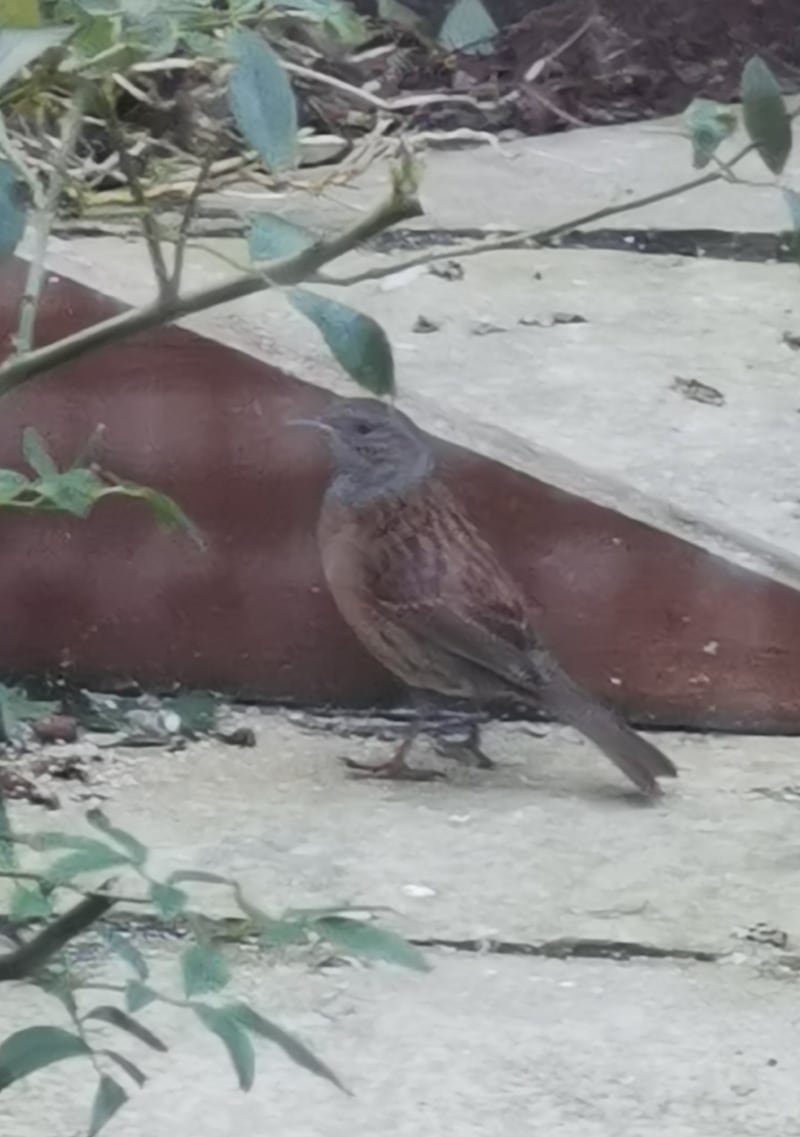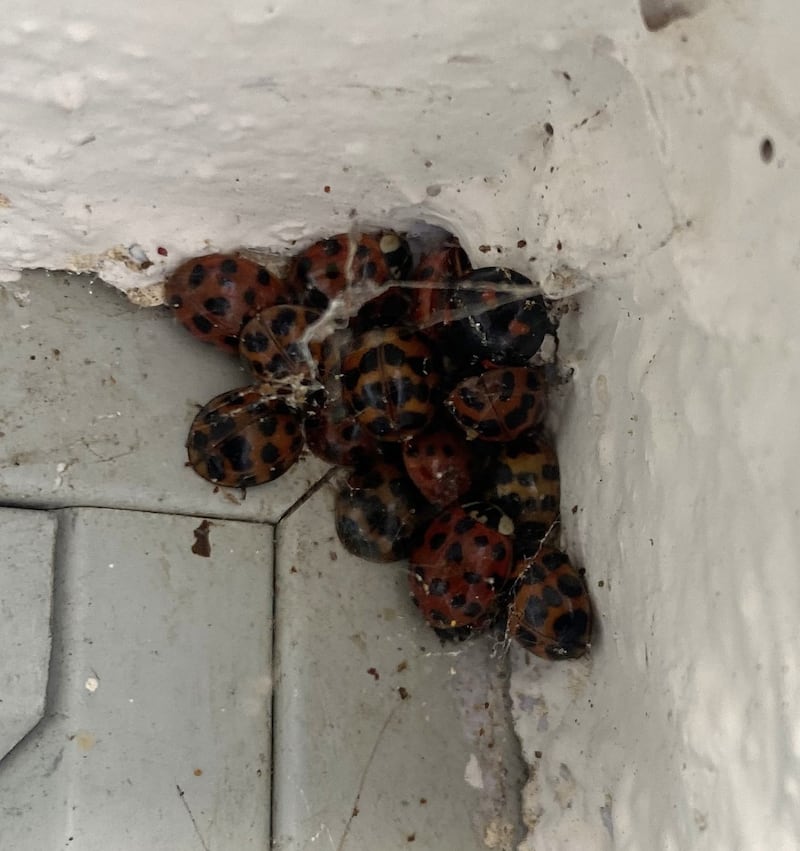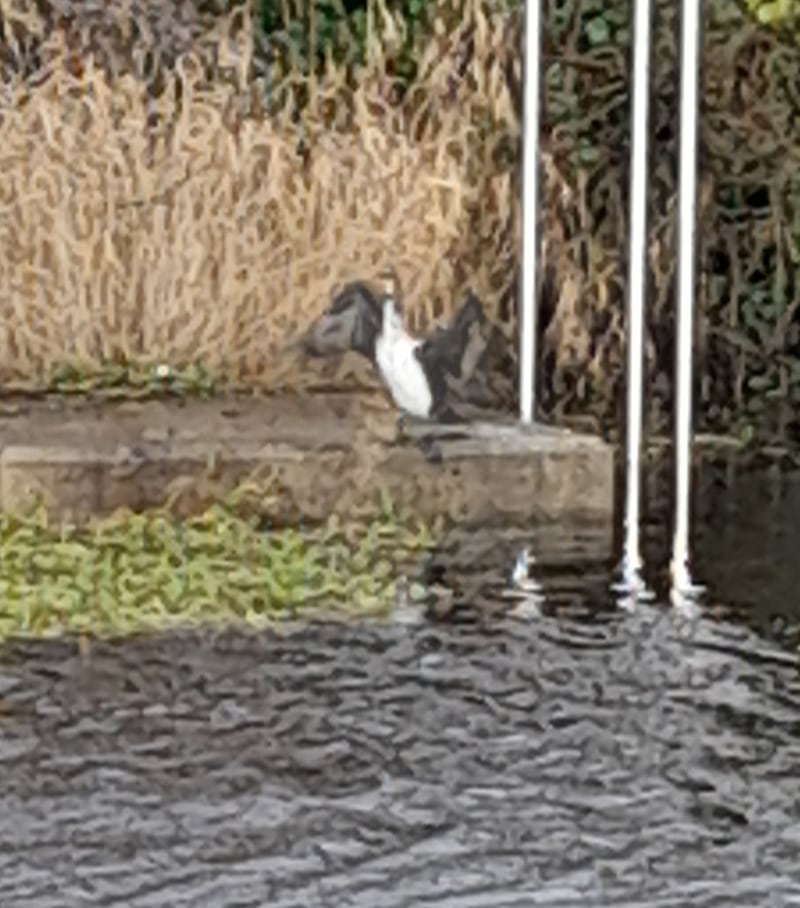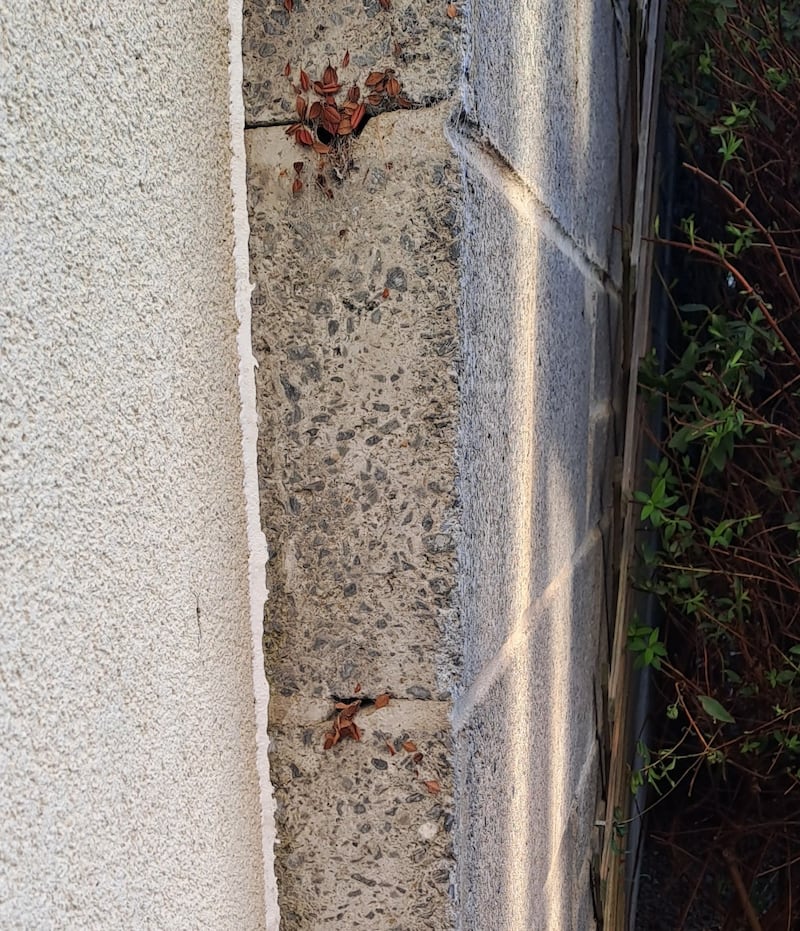I found this large, strange-looking spider under the roof of my attic in Co Meath. Is it native or foreign, poisonous or harmless? It seemed to be there quite a while as the web was large and dusty. – Oliver Cooney, Co Meath
It is certainly poisonous, as all spiders are. They kill their prey by injecting venom into them. However, almost all spiders in Ireland lack fangs strong enough to pierce our skin. It is not possible to identify a spider from an upside-down picture, but given the large tangled web, it is probably our native house spider, the female of which can live for several years and survive for months without food.

I saw this bird at our bird feeder and wondered what type it is. – Michael Fitzgerald, Co Dublin
It is a dunnock – both sexes look similar. This common garden bird mainly hops along the ground. Its domestic arrangements are rather complex, to our eyes at least, because dunnocks do not form pairs but breed in groups with two males and one female being the most common. The nest is usually well hidden in bushes or undergrowth.

I noticed this unusual grouping of ladybirds on an external window. Are they hibernating as a group and is this how they over-winter –Anthony Duggan, Dublin
These are all the one species – the dastardly invasive Harlequin ladybird. The adults are very variable, both in colour and in the number of spots. In general, all ladybird species seek a sheltered place to hibernate in autumn and can congregate in large numbers in suitable sites. When warmer weather comes, these harlequins will disperse and feed voraciously on other ladybirds and indeed on other aphid predators as well. They thus can pose a serious threat to our native ladybird populations.

While surveying for an orienteering event in Castlecomer, these lanterns caught the light in an old coal-mining area. Are insects harvesting sap? – Neil Dobbs, Castlecomer, Co Kilkenny
This is an interesting question. I can see no insects of any sort harvesting sap in the photograph. What you call lanterns seem to be the fruiting bodies of a fungus growing on the branch. This may well be Pycnoporus cinnabarinus, an orange- to red-coloured polypore fungus, which produces a white rot in the wood and occurs all year round.

I spotted a white-bellied cormorant beside the Garavogue river in Sligo in January. I never saw a cormorant like this before. Is it a regular bird in Ireland? – Fergal Gallagher, Co Sligo
It is indeed, because this is not a white-bellied (or breasted) cormorant at all, but a juvenile of our regular cormorant species Phalacrocorax carbo. It’s quite normal for some juvenile cormorants to have very pale bellies like this, though the feature is quite variable, and many juveniles are less extensively pale below than this one. The plumage becomes successively darker as the birds become older until it reaches the final adult appearance and plumage in its third or fourth year.

I have noticed these on the end of my garden wall and wonder if they might be Mason bee nests. – Anne O’Carroll, Co. Dublin
They could very well be. Their nests, each consisting of several mud cells, are wedged into holes and crevices and sealed with leaves etc. Therefore, walls with soft mortar between the blocks can attract numbers of them, although they do little damage. Keep an eye on them and see what emerges towards the end of March.
Please submit your nature query, observation, or photo with a location, via www.irishtimes.com/eyeonnature














